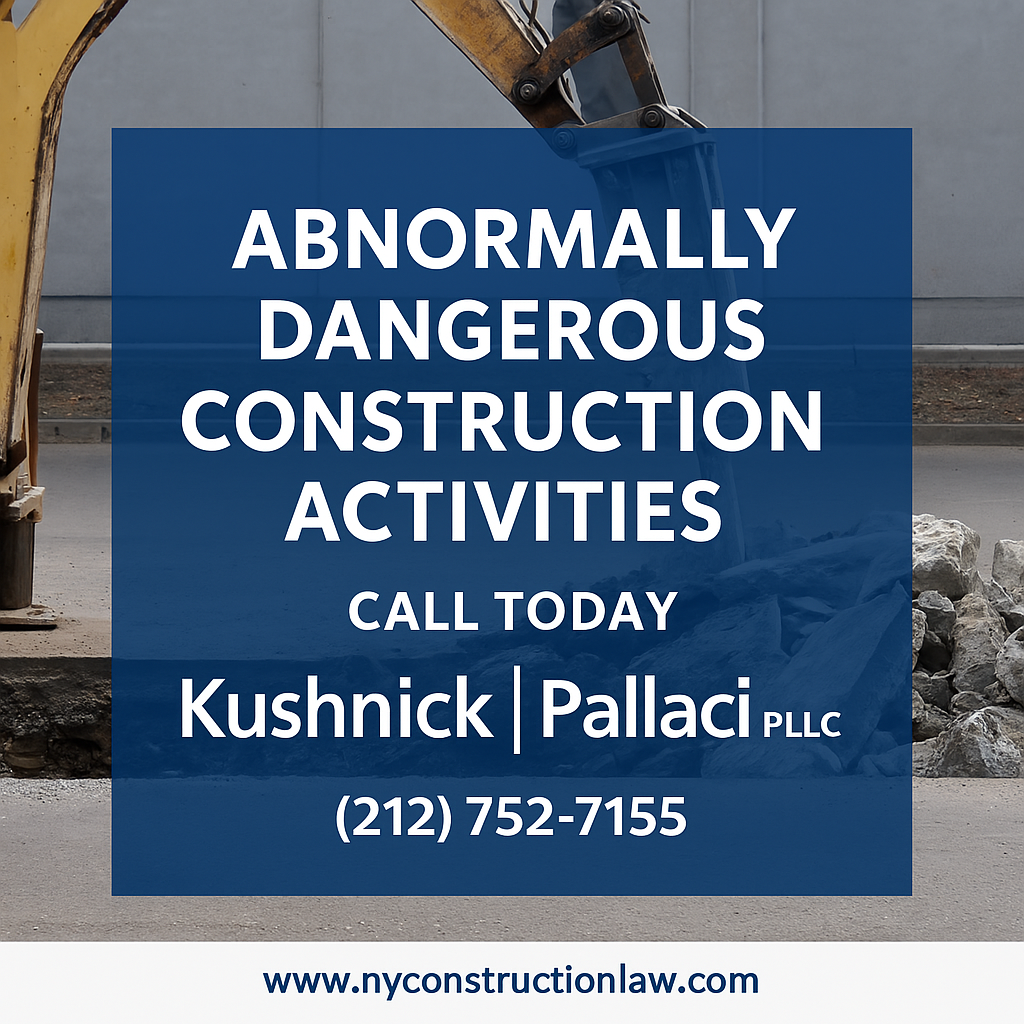In 1969, New York joined a majority of other jurisdictions which hold that one who engages in blasting work will be responsible for any injury to neighboring properties caused by the blasting, regardless of fault. In Spano v. Perini Corp. (1969), an action was brought to recover for damages that allegedly resulted from blasting operations. It was upheld that one who engages in blasting must assume responsibility, and be liable without fault, for any injury he causes to neighboring property. Furthermore, complaints alleging that defendants engaged in blasting operations, which resulted in damage to the plaintiff’s property, must contain adequate notice of transactions intended to be proven and material elements of a cause of action to be sufficient. The New York Court of Appeals held that absolute liability applied to anyone who is involved in blasting operations.
Absolute liability imposed for blasting operations has been extended to hold general contractors responsible for the blasting operations of their subcontractors, and engineers and architects liable for their contractors’ dangerous activities as well. In Carmel Associates Inc. v. Turner Construction Co. (1970), an action against a general contractor was brought for damage to the plaintiff’s property because of alleged negligence blasting operations conducted by a subcontractor. The Supreme Court of New York County held that general contractors are under non-delegable duty to prevent damage from a subcontractor’s blasting activities, and hence will be liable for damages to neighboring property resulting from blasting operations. In Doundoulakis v. Town of Hempstead (1977), a landowner brought an action for negligence in connection with a hydraulic landfilling project. It was held that those who engage in an activity of sufficiently high risk of harm to others, especially where there are reasonable alternatives, should bear the cost of harm caused to an injured party. Furthermore, just as a landowner is responsible because of his or her own benefits to engage in activity of sufficiently high risk of harm to others, so too liable are those who intentionally undertake or join in that abnormally dangerous activity for consequences resulting from harm to others.
To determine whether an activity is an abnormally dangerous one, subjecting those involved to absolute liability, the test set forth in Doundoulakis v. Town of Hempstead, which is based on § 519 of Restatement Second, Torts, must be applied. Six criteria are considered: 1) the existence of a high degree of risk of some harm to the person, land, or chattels of others; 2)the likelihood that resulting harm will be great; 3) an inability to eliminate the risk through the exercise of reasonable care; 4) the extent to which the activity is uncommon; 5) the inappropriateness of the activity to the place where it is performed; and 6) the extent to which its value to the community is outweighed by its danger. New York applies a variable standard which takes not only the activity into account, but also its location and value.

